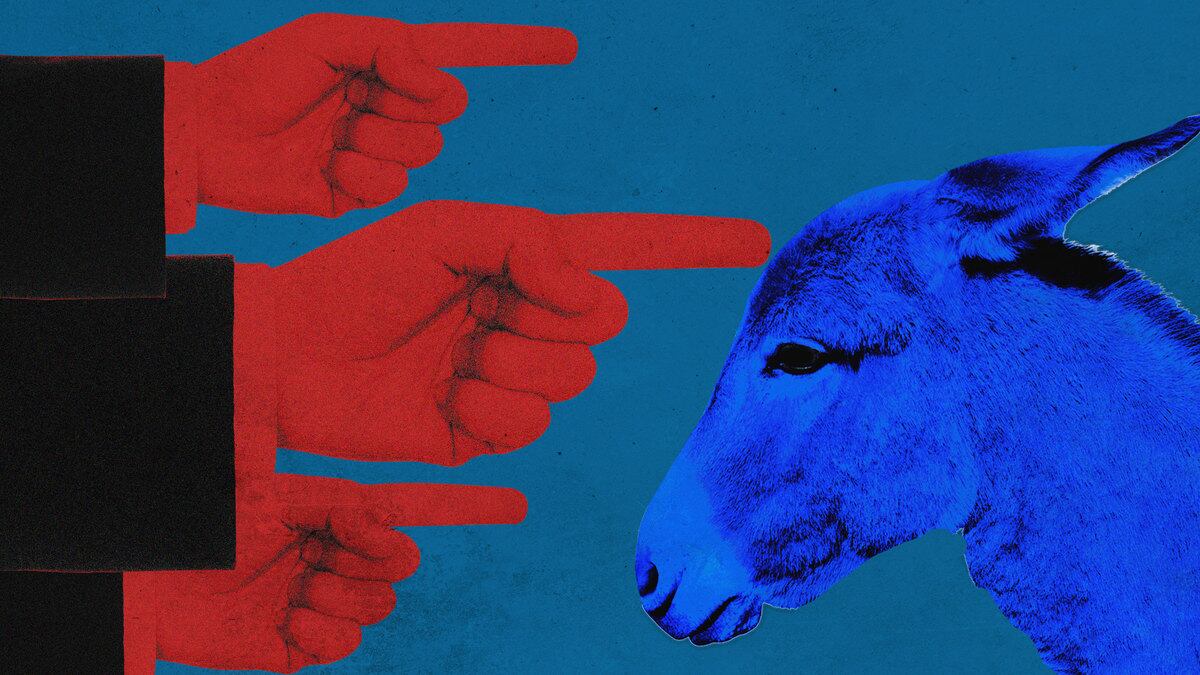Liberals, conservatives love to say, live in a bubble. Every time something like this Bari Weiss thing happens, the cry goes up to the heavens: Look at these Stalinist liberals, enforcing their world view on poor conservatives, stifling voices, silencing opposing points of view even as they claim to believe in open dialogue, the hypocrites!
There is, obviously, some truth to the fact that both sides live in bubbles these days. But while we spend hours upon hours and tweets upon tweets investigating and dissecting the liberal bubble, it somehow almost never occurs to people to examine the conservative one.
So let’s examine it. And if we do, we see that it is far, far more insular and intolerant than the liberal bubble. And worse, we see that they get away with it simply because they never even try, never even feint toward balance. They’re con artists pure and simple.
ADVERTISEMENT
Let’s look at some basic numbers. The New York Times (where, by the way, I am a contributing opinion writer, part of the larger stable of occasional, non-employee contributors) has three regular conservative oped columnists—David Brooks, Ross Douthat, and Bret Stephens. The Washington Post has five regularly appearing conservatives: George Will, Michael Gerson, Mark Thiessen, Kathleen Parker, and Megan McArdle. Pro-Trumpers will quibble that some of these no longer count as “conservative,” but come on: They were all hired as conservatives, and they sure aren’t liberals.
This point does illustrate the larger reality that these things can be complicated. Is Brooks still a conservative in the same sense Stephens is? Not really. And what about someone like Elizabeth Bruenig of the Times? She’s a socialist—but also pro-life. What’s she?
So these things can be complicated, but if we think about it in the most general terms, it’s more than fair to say that the Times has three conservatives, and the Post has five.
Meanwhile, let’s look at our country’s best-known conservative newspapers. There are three that have national audiences and are avowedly conservative in outlook: The Wall Street Journal, The Washington Times, and the New York Post.
How many liberals do they have? Three each, like the Times? OK, two each, maybe?
No. One. Among them. Total. The Journal has one, and the other two have zero.
The Journal’s house liberal is William Galston of the Brookings Institution. Bill is a friend of mine and an extremely smart man. He was a leading “New Democrat” thinker back in the Clinton days. Indeed he is rightly proud of the role he played in helping to provide the intellectual framework that succeeded in electing the first Democratic president in 12 years back in 1992 (that those ideas are out of favor now is a different point, and Bill himself is not in the same ideological place he was then).
So the Journal has one person representing non-Journal points of view on a consistent basis. That’s less than the Times or the Post, but hey, it is more than zero.
And yet, I’m sure all of these outlets have teed off on the Times in self-righteous ways. Talk about glass houses—and hypocrisy! The imbalance here is insane. The liberal newspapers at least try. The right-wing papers don’t pretend to try. And then, when a liberal newspaper tries and slips up, the right-wing papers unfurl their mighty swords of justice and cry “Aha!”
Well, to paraphrase Randy Newman, I laugh at their mighty sword. These people are a joke. There was Hugh Hewitt in The Washington Post Thursday taking the Times to task. A… no, not merely a conservative; a pro-Trump right-winger, writing in a liberal newspaper! Gee, Hugh, how’d you ever get that platform? And what explains why I see you on MSNBC on a regular basis—left-wing intolerance?
It’s nonsense. It’s the same thing with these campus controversies. Yes, sometimes a conservative is invited to speak at a liberal school, and he or she is attacked in some way or prevented from speaking, and I do not defend that. I have nothing but scorn for that.
But again—at least they are asked. Meanwhile, ponder this: When was the last time Liberty University invited, oh, Paul Krugman to lecture there, or Katha Pollitt, or Ta-Nehisi Coates, or Jennifer Finney Boylan? I haven’t studied this lately, so my information could be old, but I did snoop around this question a couple years ago out of curiosity, and the answer then was what I’d reckon it probably still is now. Never.
At least Berkeley asked Anne Coulter, and after one cancellation, she spoke. Lamentable unpleasantness ensued, which again, I do not defend in the slightest. But she did speak. And the Ivies, to say nothing of your basic land-grant universities, are constantly having conservative speakers. I was a fellow at the Kennedy School in 2003, and the list of speakers went out every day, and I can tell you, there were loads of conservatives, almost as many as liberals at times. There weren’t protests. But “Conservative Speaks on Liberal Campus Without Incident” isn’t news and doesn’t give Fox a cheap excuse to tee off on favorite targets. And yet it happened. All. The. Time.
But right-wing schools by and large don’t even ask people on the left to speak, and they get away with it because no one even expects them to operate according to the same standards. Yes, Liberty did have Bernie Sanders, and that’s to the school’s credit (and no doubt they’ll dine out on that one for years), but it was just once, and anyway, he was a candidate for president, a politician, which is a different thing from an intellectual. Politicians traffic in positions and slogans. Intellectuals traffic in ideas. Obviously, right-wing institutions don’t feel they even need to hear liberal ideas. And sorry, but the opposite is emphatically not true.
Now, I suppose conservatives would counter this—if indeed they would admit to the imbalance in the first place—by saying the thing they always say about well, you liberals, you own the mainstream media, we’re entitled to our own little patch of Earth. I could sympathize with that, a little, except that one of the arguments always lodged against the Times is that a newspaper has an obligation to serve the broad community and represent a diversity of views. Which The Washington Times and New York Post make zero effort to do, and The Wall Street Journal barely does. And it’s kind of hard to argue that there aren’t any Democrats in their cities.
As usual, it’s a racket, this right-wing attack on liberal intolerance. Bari Weiss is no martyr to anything. The Times and the Post try harder than the right-wing papers to publish diverse views. The whole line of argument is just an ideological working of the refs. Don’t fall for it.






